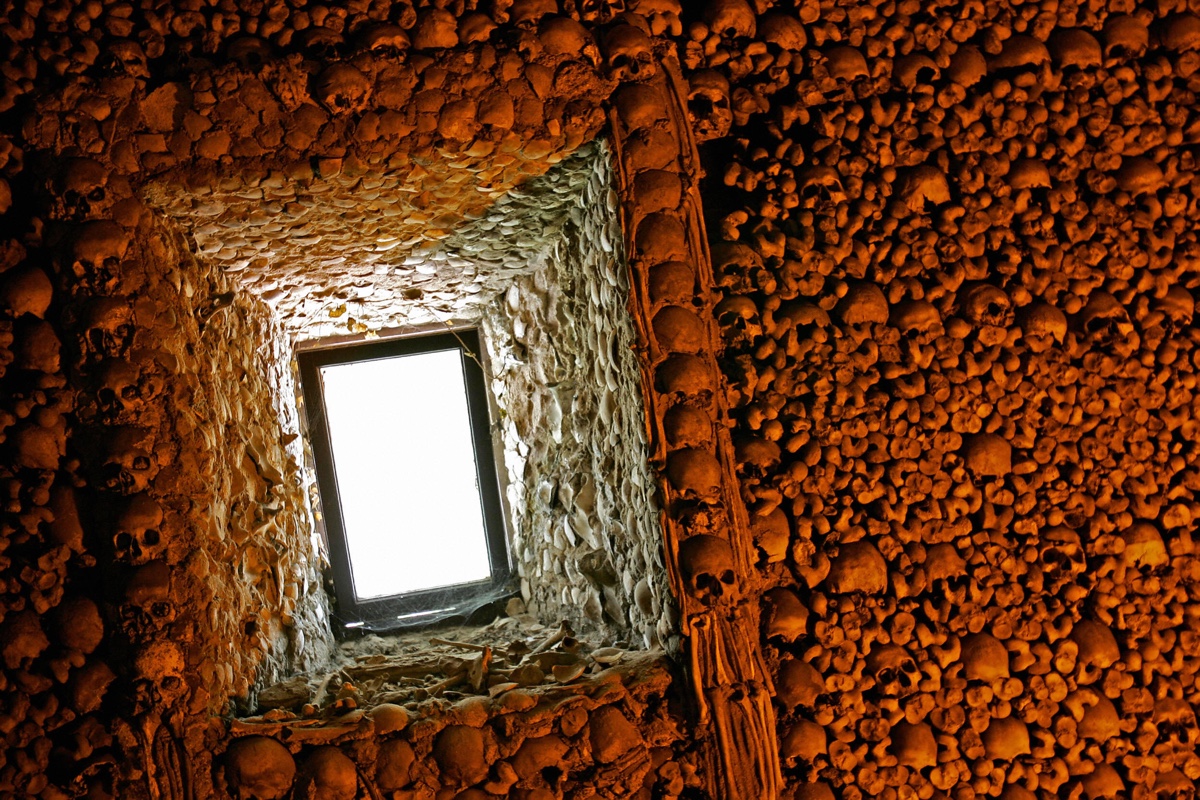The History Behind That Creepy Bone Chapel You Saw on Reddit
The monks couldn't have foreseen this. A photo trending on Reddit of a bone-covered chapel is bringing a medieval "memento mori" to the modern Internet user today.
The post, with more than 20,000 upvotes on the popular social site, is simply labeled "Chapel of Bones." Zoom in, and the pebbled texture of the walls resolves into a wallpaper of bones and empty-eyed skulls. What is this place?
It's the Capela dos Ossos in Evora, Portugal. The chapel is a small portion of a larger (bone-free) church complex, the Igreja de Sao Francisco. Inside, it's lined with more than 5,000 skulls plus assorted other human bones. [11 Famous Places That Are Littered with Dead Bodies]
These bones once rested in the churchyard around Igreja de Sao Francisco, but in the 16th century, the graveyard was running out of space. The Franciscan monks who ran the place came up with the solution of exhuming old, long-defleshed bones and cementing them into the ossuary. This served the dual purpose of preserving the bones for the Day of Resurrection — a key belief in some Christian denominations that holds that at the end of the world, the dead will be restored to their physical bodies — and providing a site of contemplation for the living. The chapel's décor prompts personal philosophizing about death: Above the entrance is carved, "Nós ossos que aqui estamos, pelos vossos esperamo," which translates roughly to, "We bones that are here, await yours." [Top 10 Weird Ways We Deal With the Dead]
Inside the chapel hangs a poem said to be written by parish priest António da Ascenção Teles, who held that position in the 1840s. It reads, in part, "Recall how many have passed from this world/ Reflect on your similar end/ There is good reason to reflect/ If only all did the same."
The chapel also houses two partially skeletal, partially mummified bodies, of one adult and one child, which used to hang from ropes from the ceiling but now rest in glass cases.
Portugal isn't the only place where people got a hankering to build with bones. The Capuchin Crypt in Rome is a 17th-century chapel decorated with the bones of some 3,700 Capuchin friars. The building has multiple rooms with names like "The Crypt of the Pelvises," and in one, robed skeletons pose with scythes and scales, representing death and judgment.
Get the world’s most fascinating discoveries delivered straight to your inbox.
Perhaps the record-holder in the category of "interior design with human bones," though, is the Sedlec Ossuary in Kutna Hora, Czech Republic. That church was constructed in 1400, and the land was covered with soil from the Church of the Holy Sepulchre in Jerusalem, said to be the spot where Jesus Christ was crucified. According to the ossuary's website, this holy soil made the church a popular place to be buried. Over time, as the graveyard became overcrowded, bones were moved into the church. In 1870, a local woodcarver named Frantisek Rint was given the task of organizing them; he created elaborate displays, including a bone chandelier and elaborate crests made of tibia, fibula and femurs. Bones from more than 40,000 individuals are said to decorate the Sedlec Ossuary.
Original article on Live Science.

Stephanie Pappas is a contributing writer for Live Science, covering topics ranging from geoscience to archaeology to the human brain and behavior. She was previously a senior writer for Live Science but is now a freelancer based in Denver, Colorado, and regularly contributes to Scientific American and The Monitor, the monthly magazine of the American Psychological Association. Stephanie received a bachelor's degree in psychology from the University of South Carolina and a graduate certificate in science communication from the University of California, Santa Cruz.



